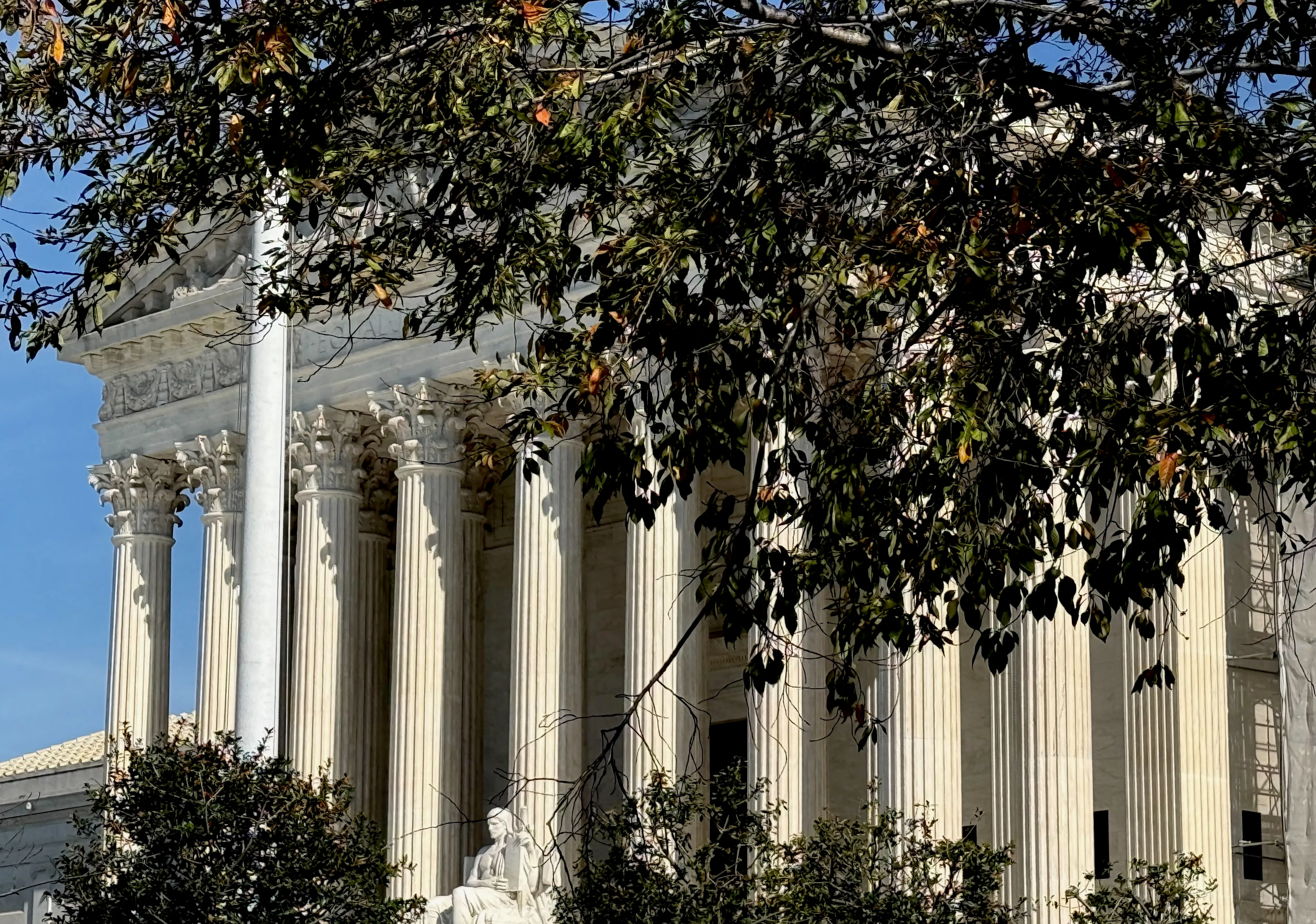Is religious freedom possible in state schools?


Rights and Responsibilities is a recurring series by Richard Garnett on legal education, the role of the courts in our constitutional structure, and the law of religious freedom and free expression.
Please note that the views of outside contributors do not reflect the official opinions of SCOTUSblog or its staff.
One of the more closely watched, “hot-button” cases of the Supreme Court’s recently wound-down 2024-25 term was Mahmoud v. Taylor. (For more, see my friend Asma Uddin’s helpful July 1 review and discussion of the decision.) In a nutshell, the case involved several parents’ First Amendment challenge to a Maryland school district’s policy banning notice about, and “opt outs” from, certain books and lessons regarding gender identity and sexual orientation. The court ruled, in a 6-3 decision, that the policy (likely) imposes a “burden” on the objecting parents’ religious-freedom rights and that this burden (likely) is not constitutionally justified.
Along the way, the justices discussed, and disputed, a number of interesting and important questions. What, for example, is the current status and import of the court’s landmark 1972 ruling in Yoder v. Wisconsin, in which the court held that forcing Amish children to attend school past the eighth grade violated “the rights of parents to direct the religious upbringing of their children”? Was it simply a “one-off” win for Amish parents whom the court found intriguing, charming, and nonthreatening? Or, does it stand for a foundational, and legally enforceable, principle that parents have the right to direct the education and formation of their children because, as the court put it in 1925, “the child is not the mere creature of the State”? Is public education a “public benefit” to which governments may, as they so often do, attach “take it or leave it”-type conditions? Are courts considering constitutional claims supposed to afford special deference to politically accountable school districts and administrators?
In my view, the majority’s decision was correct. Given the relevant doctrines and precedents, instruction and materials used in the education of primary-school children can impose a burden on protected constitutional rights, and it is difficult for officials to claim that such a burden is necessary and unavoidable when, as was the case here, the district permits and provides “opt outs” and notice in other contexts. As Justice Samuel Alito observed, the parents objected to curricular content that went beyond mere “exposure to objectionable ideas” and messages that went beyond “mutual respect”; rather, “the storybooks unmistakably convey[ed] a particular viewpoint about same-sex marriage and gender,” and the school board “specifically encouraged teachers to reinforce this viewpoint and to reprimand any children who disagree.”
Contrary to the suggestion of Justice Sonia Sotomayor, her dissenting colleagues, and some critical commentators, the ruling does not require chaos and it is not a green light for courts, or parents, to micromanage the school day. The majority clearly affirmed the overriding importance of “an undisrupted school session conducive to the students’ learning.”
At the same time, Mahmoud reminds us of deeper problems and (perhaps) inescapable tensions. Almost two decades ago, I wrote a (short!) law-review article with the deliberately provocative title Can There Really Be Free Speech in Public Schools? The article addressed a different, earlier Supreme Court decision called Morse v. Frederick, also known as the “BONG HiTS FOR JESUS” case, which upheld the suspension of a high-school student who mischievously displayed a banner with that “message” at a school-sanctioned, extracurricular event.
I have to admit that a common response from colleagues to the article and its title was to paraphrase the story Garrison Keillor told about a man who, when asked if he believed in infant baptism, said “believe in it, hell, I’ve seen it done!” And yet, I asked in the article, given what we have come to think the First Amendment’s free speech clause means, and considering the values it is thought to enshrine and the dangers against which it is thought to protect, is it really possible for the freedom of speech to coexist with the work, nature, and fundamental mission of government-run public schools? As I noted, most American lawyers recall and thrill to Justice Robert Jackson’s stirring rhetoric in the court’s famous 1943 West Virginia flag-salute case: “If there is any fixed star in our constitutional constellation, it is that no official, high or petty, can prescribe what shall be orthodox in politics, nationalism, religion, or other matters of opinion.” But is this really true – could it ever be true – in state schools?
After Mahmoud, we might ask the same question about religious liberty.
Again, of course, we’ve “seen it done.” There are countless court decisions vindicating the religious-freedom rights of public-school children and their parents and applying the longstanding maxim that children do not “shed their constitutional rights … at the schoolhouse gate.” The Constitution’s rule against any “establishment” of religion, correctly understood, is designed to protect religious freedom, after all, and many of the landmark (and controversial) establishment clause decisions have involved the state-school context: moments of silence, Bible readings, graduation invocations, Ten Commandments displays, and – most recently – praying football coaches. In our law, religious expression is still “expression,” and courts have regularly protected public-school students’ religious expression and activities from discrimination and censorship by school officials.
Still, the “fit” between the nature and mission of state schooling, on the one hand, and our constitutional commitment to religious liberty, on the other, is an awkward one. Think about some of the pervasive and powerful themes in our law of religious liberty: The government is supposed to be “neutral” with respect to the content, and especially with respect to the viewpoint, of religious expression and creedal profession. It is supposed to manage “forums” in a (generally) “neutral” way. Until recently, there was an establishment clause rule that did not permit governments to “endorse” any religious teachings. As was noted earlier, it is supposed to be foundational for us that “no official, high or petty,” may prescribe what is “orthodox.” Courts regularly and closely police policies for “coercion” in religious matters. And, when it comes to the free exercise of religion, our law reflects a general openness to accommodations, exceptions, and special treatment (even when they are not required).
None of this translates very well into the context of state schooling. Public education exists precisely to be not-neutral, to promote “orthodoxy,” to shape belief, to form minds, to forge loyalties, and to mold commitments. Students are assigned grades based on what they say, and one purpose of these grades is to affect what they think, and do. Classrooms do not operate like “forums” or Speakers’ Corner. Accommodations and exceptions for dissidents are not the rule; consensus and shared commitment are the goals. In Mahmoud, all admitted, this was precisely the aim of the contested materials. The school district was not “neutral” with respect to its project; it did not run away from its preferred “viewpoint.”
So, as another once asked, what is to be done? Courts, most likely, will muddle through with the doctrine that we have, as they have done, at least since the 1960s. They will continue to profess attachment to the “schoolhouse gates” maxim while at the same time appreciating that operating schools, and the enterprise of government-run education, cannot be squared with the purported premises of First Amendment doctrine.
A less plausible – indeed, I would say, impossible – option would be to “level up” the protections provided for religious liberty in the public-school context to those provided in the “government as regulator” context. But Sotomayor was almost certainly right, in dissent, to complain that, even with today’s technology, bespoke state schooling is not possible. A third option, one that Justice Clarence Thomas held up, years ago, in his own concurring opinion in Morse v. Frederick, would be to say that, in fact, the First Amendment does not apply in the context of state schooling at all. (Or, if it does, it does so in a way that treats schools, as so many schoolchildren would appreciate and as Pink Floyd depicted, more like prisons than parks.)
A fourth option is the most promising and attractive. The move toward school choice and educational pluralism has been accelerating rapidly, in legislatures as well as in the courts of law and public opinion. Indeed, at the Mahmoud oral arguments, Justice Ketanji Brown Jackson stated that parents who object to the district’s curricular policies could simply send their kids to private schools. Easier, for many, said than done. The way to reconcile First Amendment commitments with the nature of state education is meaningful, equitable school choice. Certainly, religious-freedom advocates, education reformers, and concerned parents should engage closely with political and policy questions about the purpose and performance of state schooling. At the same time, they should work to make the Constitution’s parental-rights promise a reality for all.
Posted in Recurring Columns, Rights and Responsibilities
Cases: Mahmoud v. Taylor